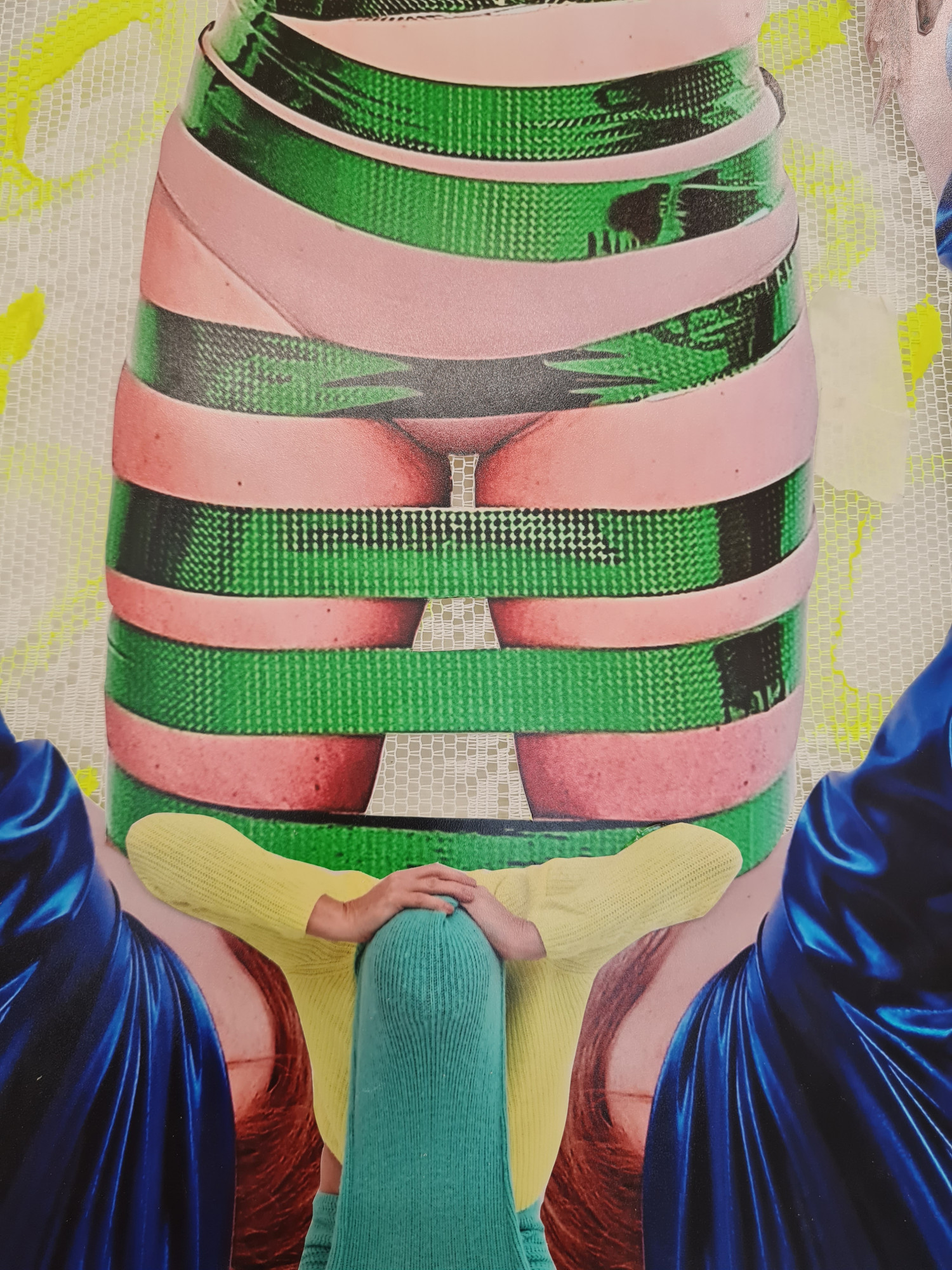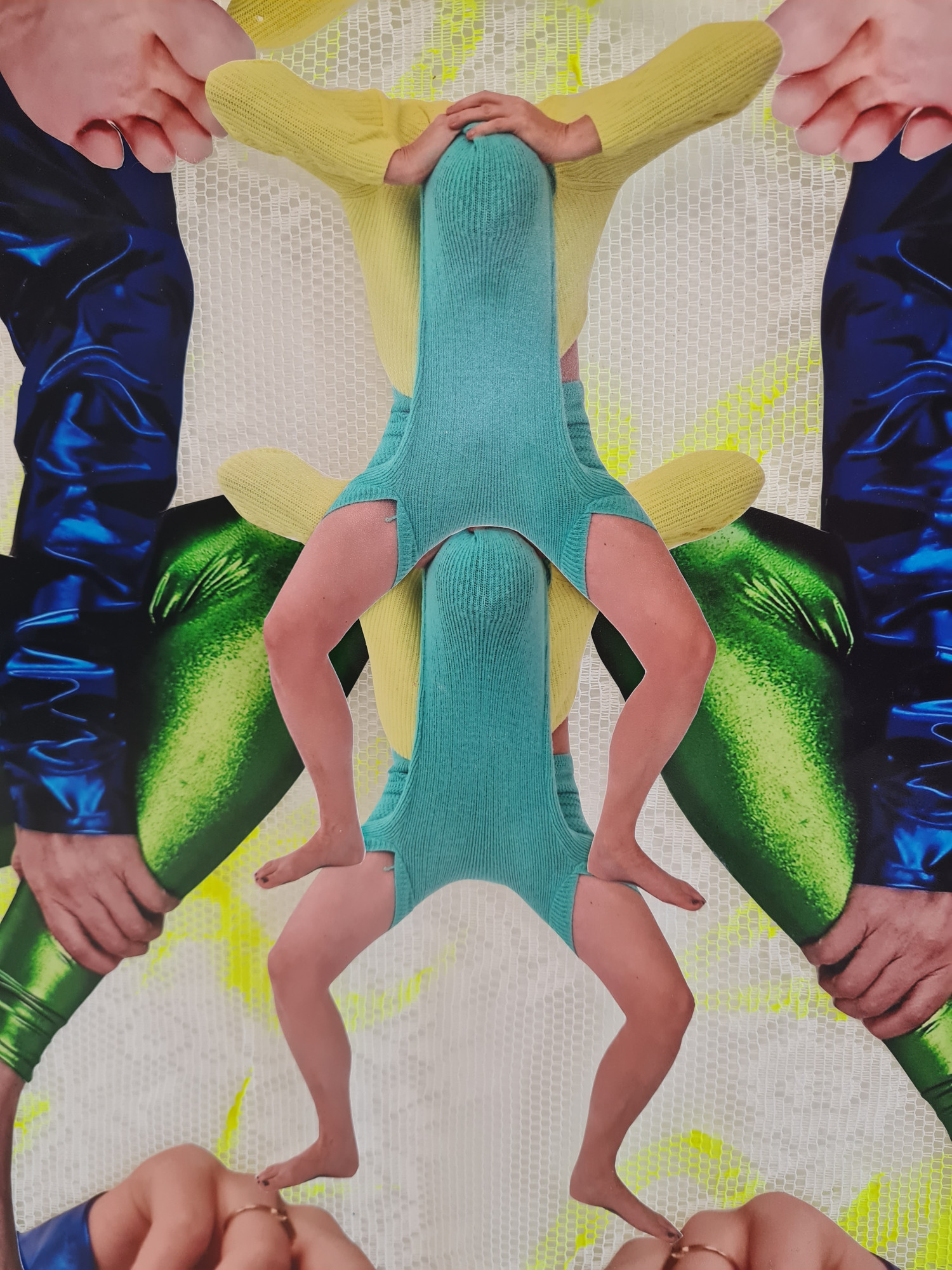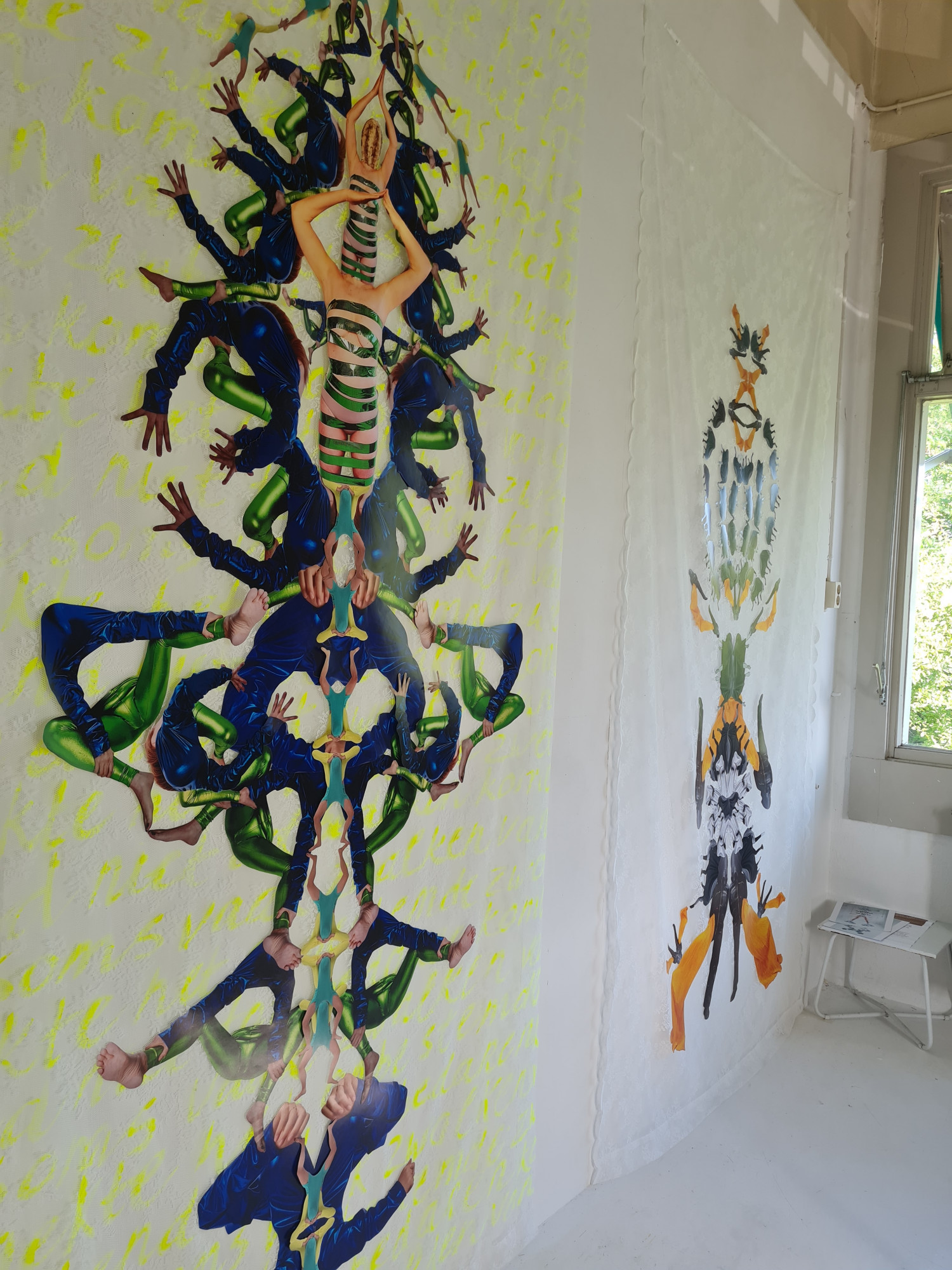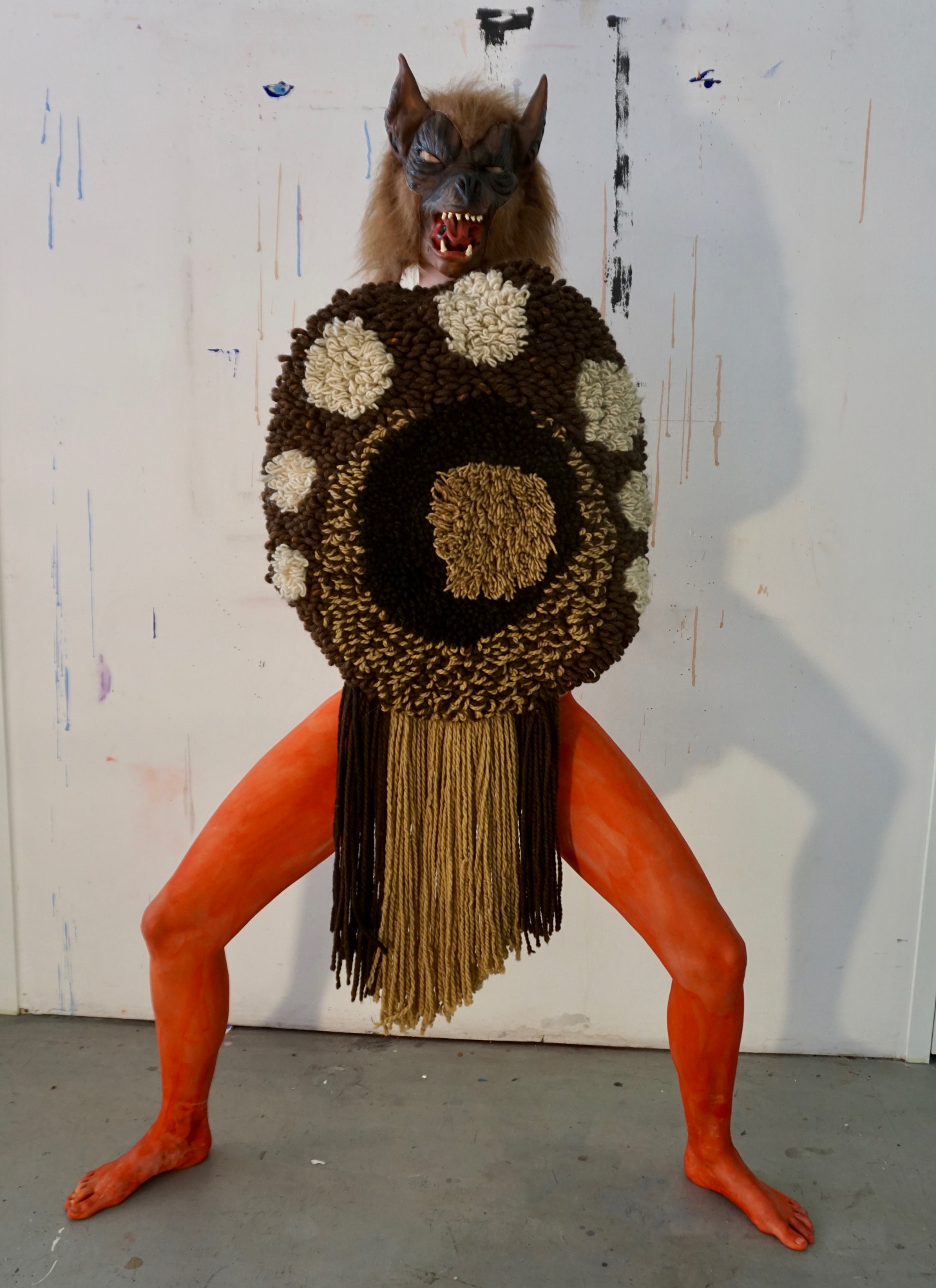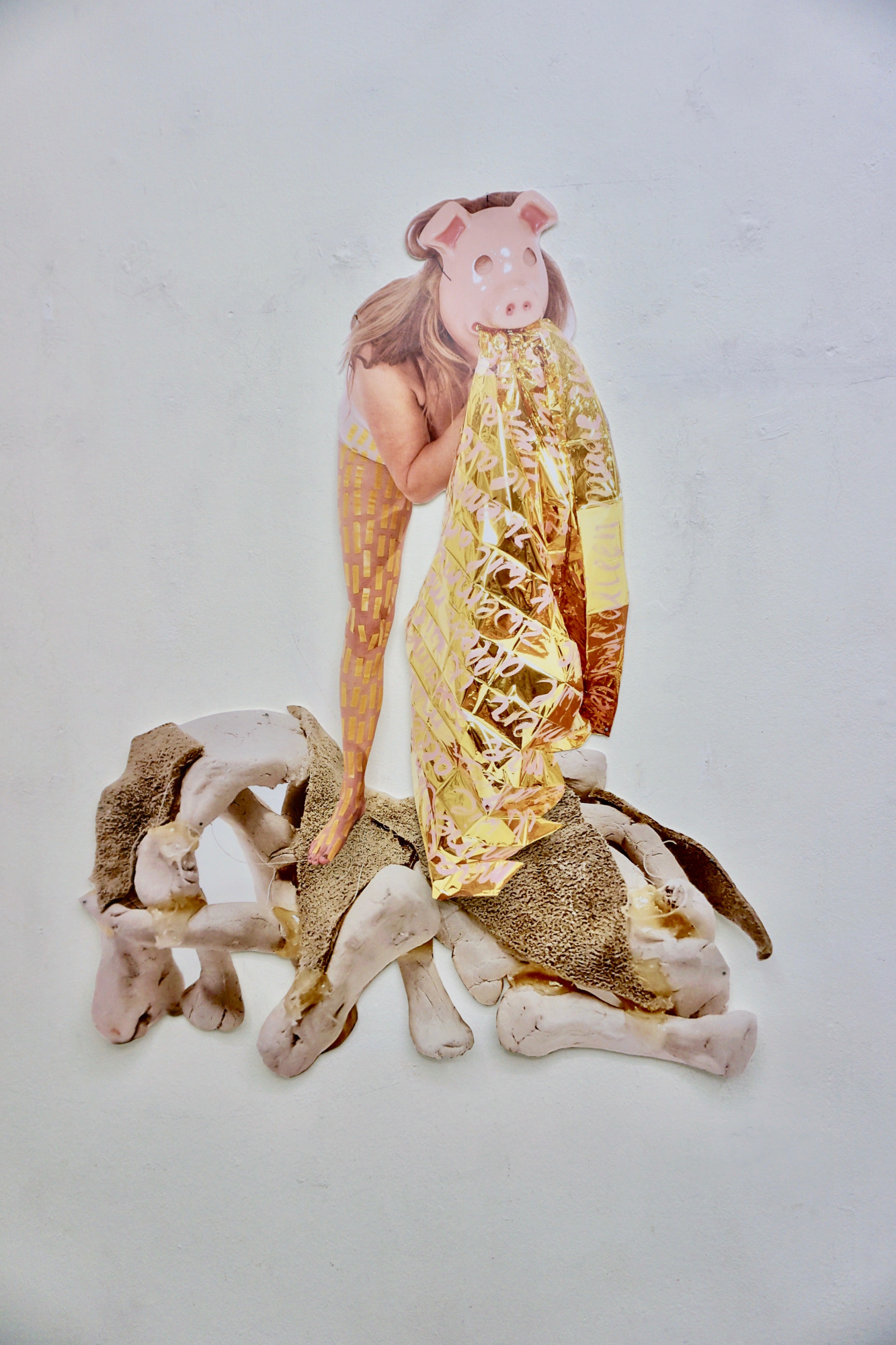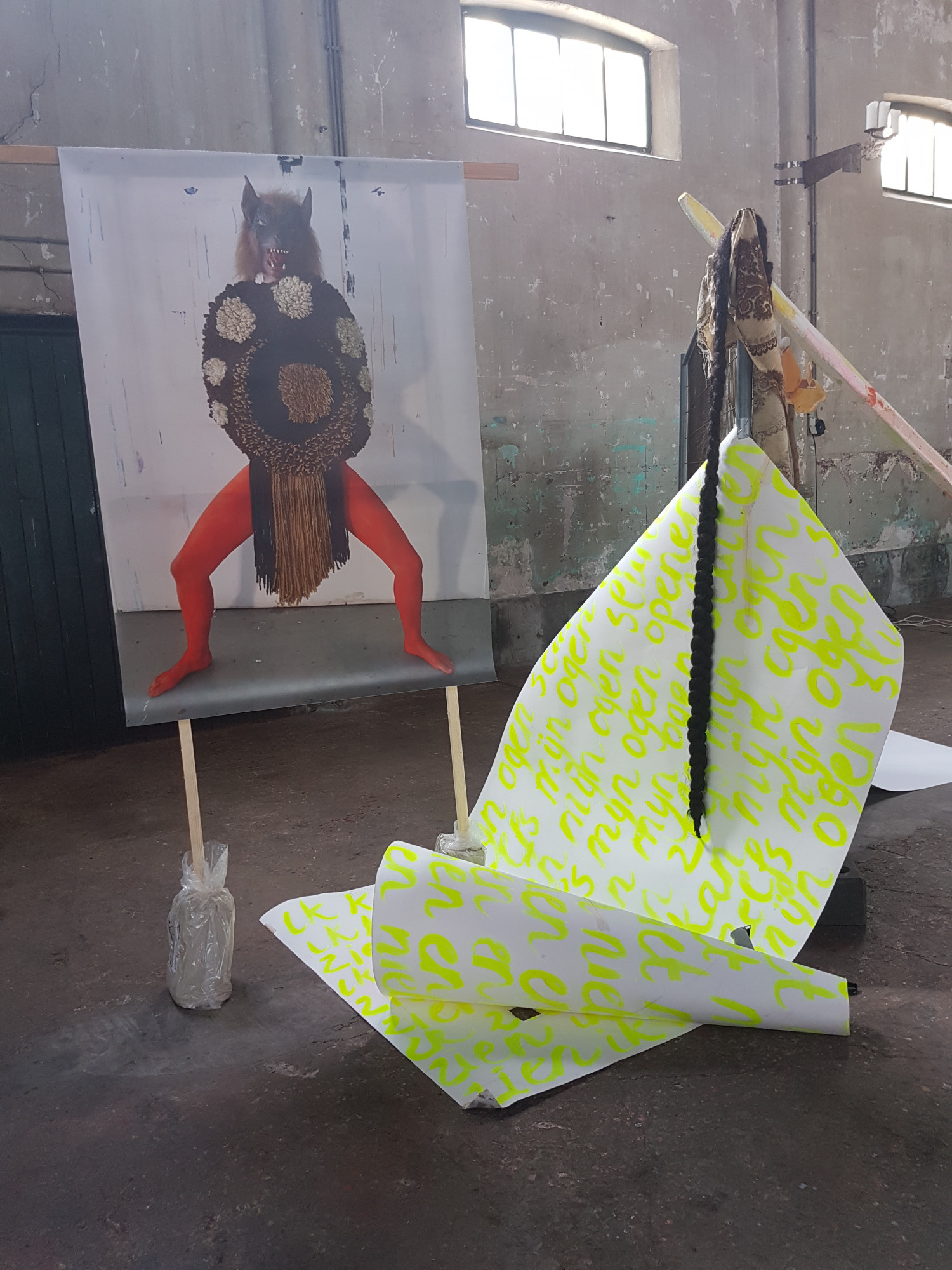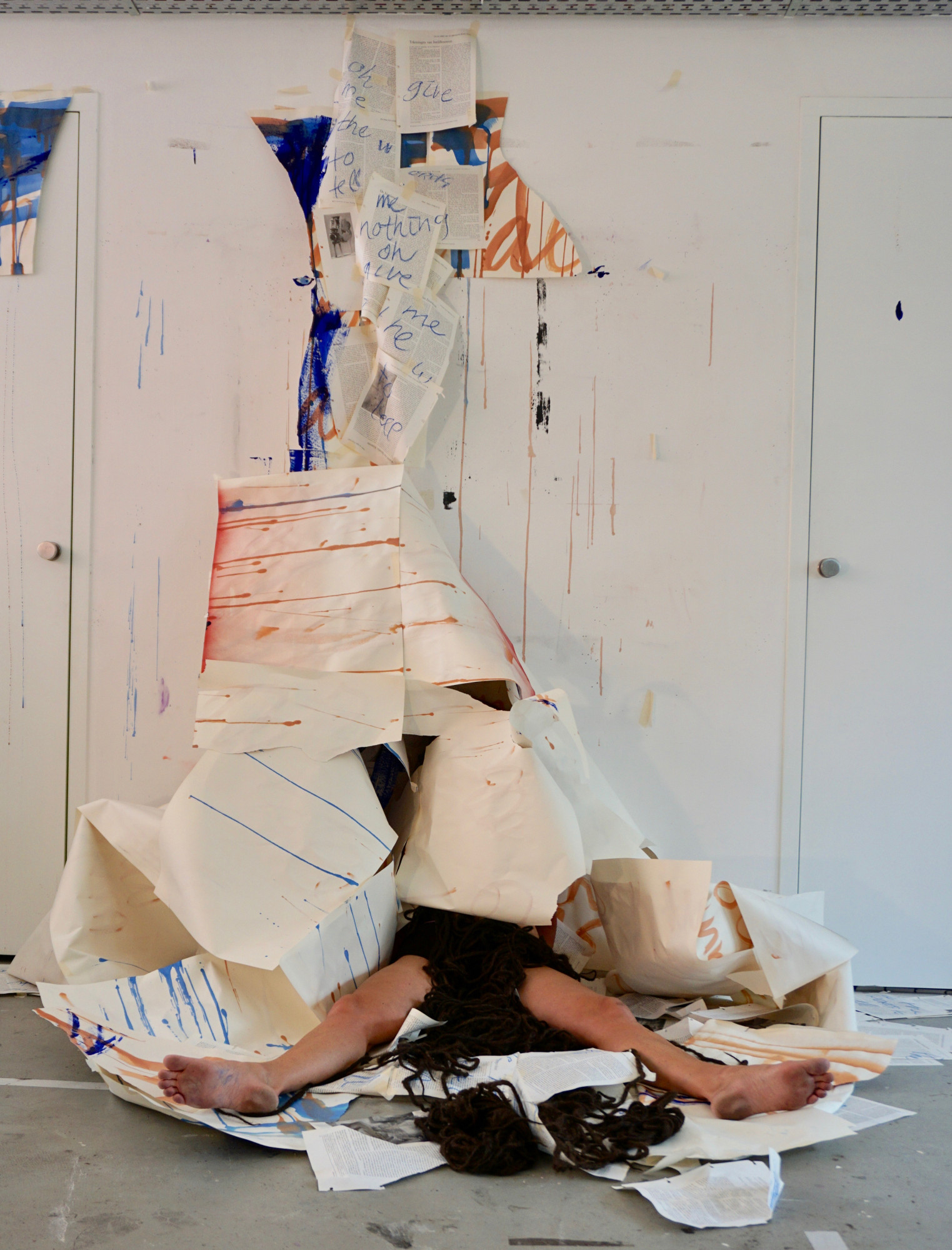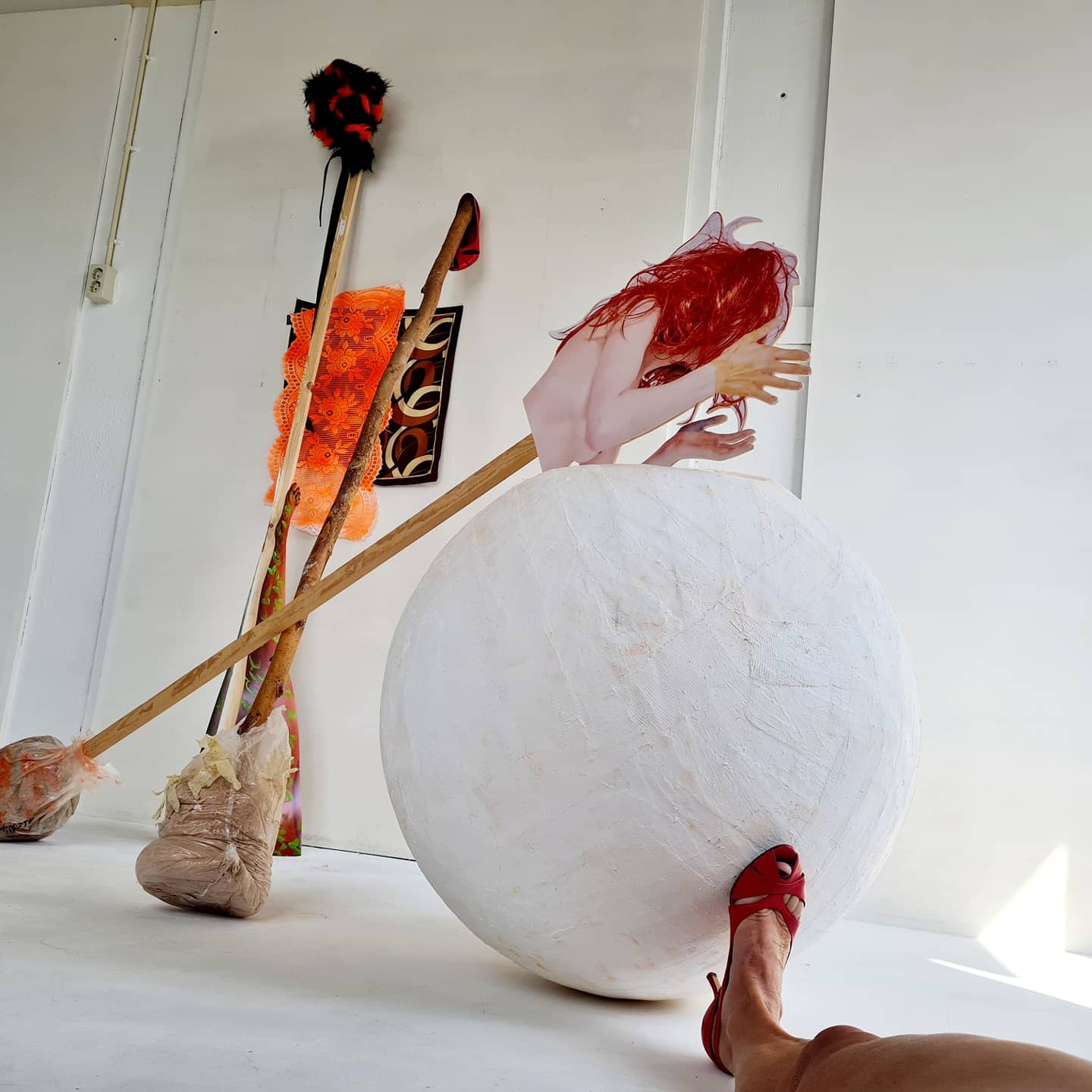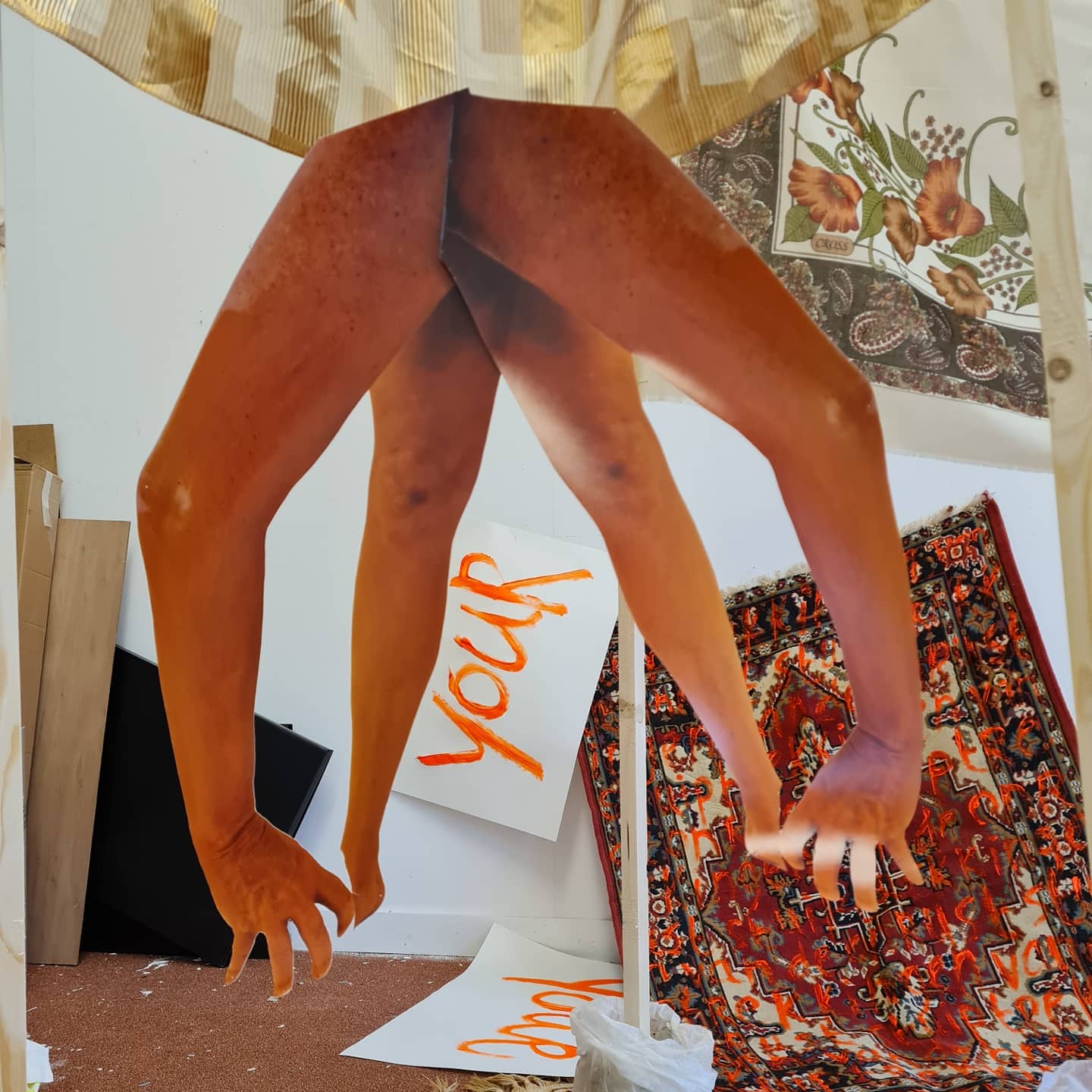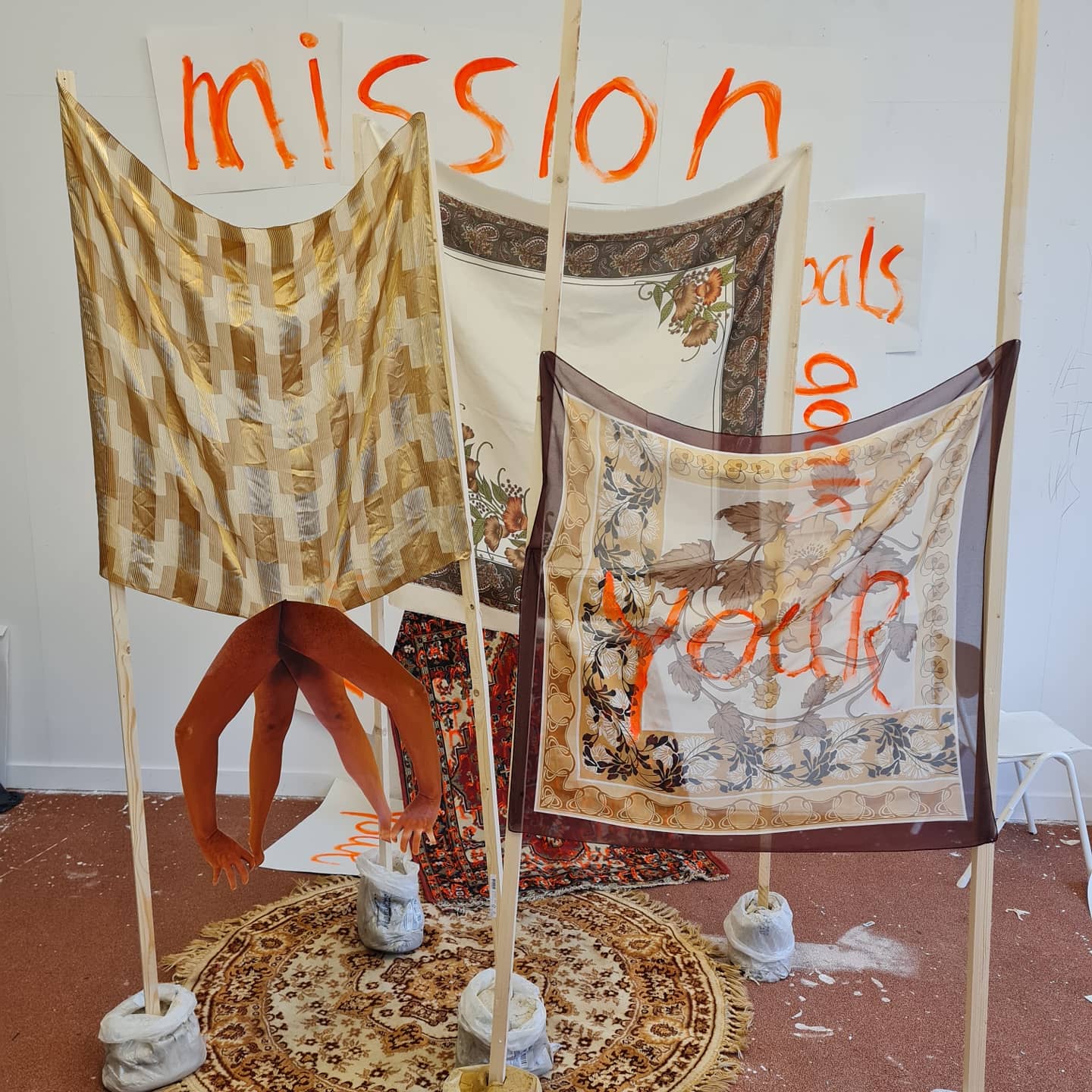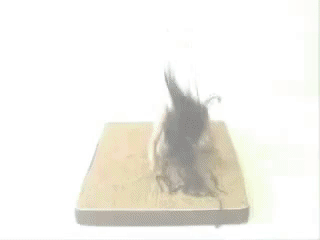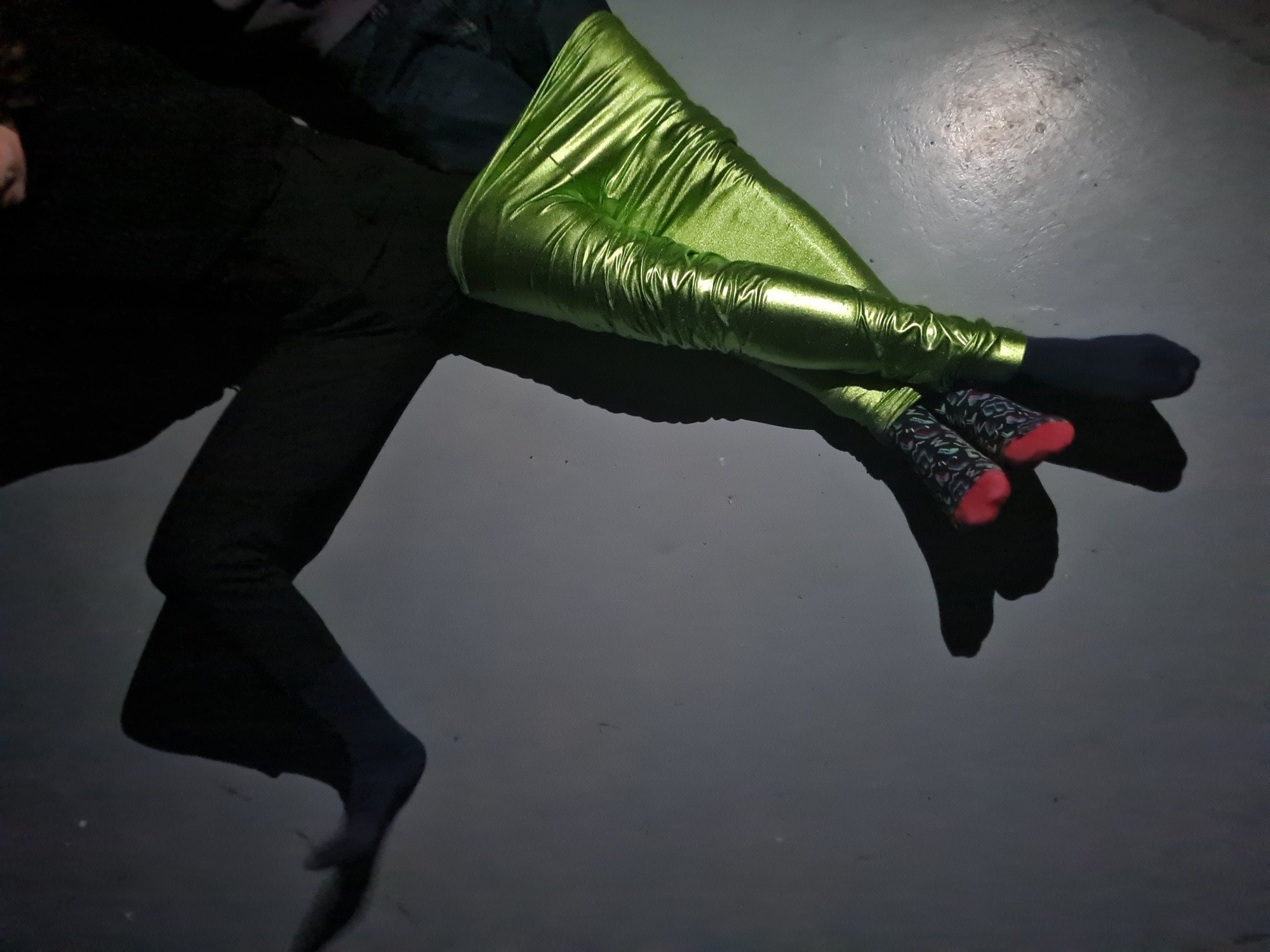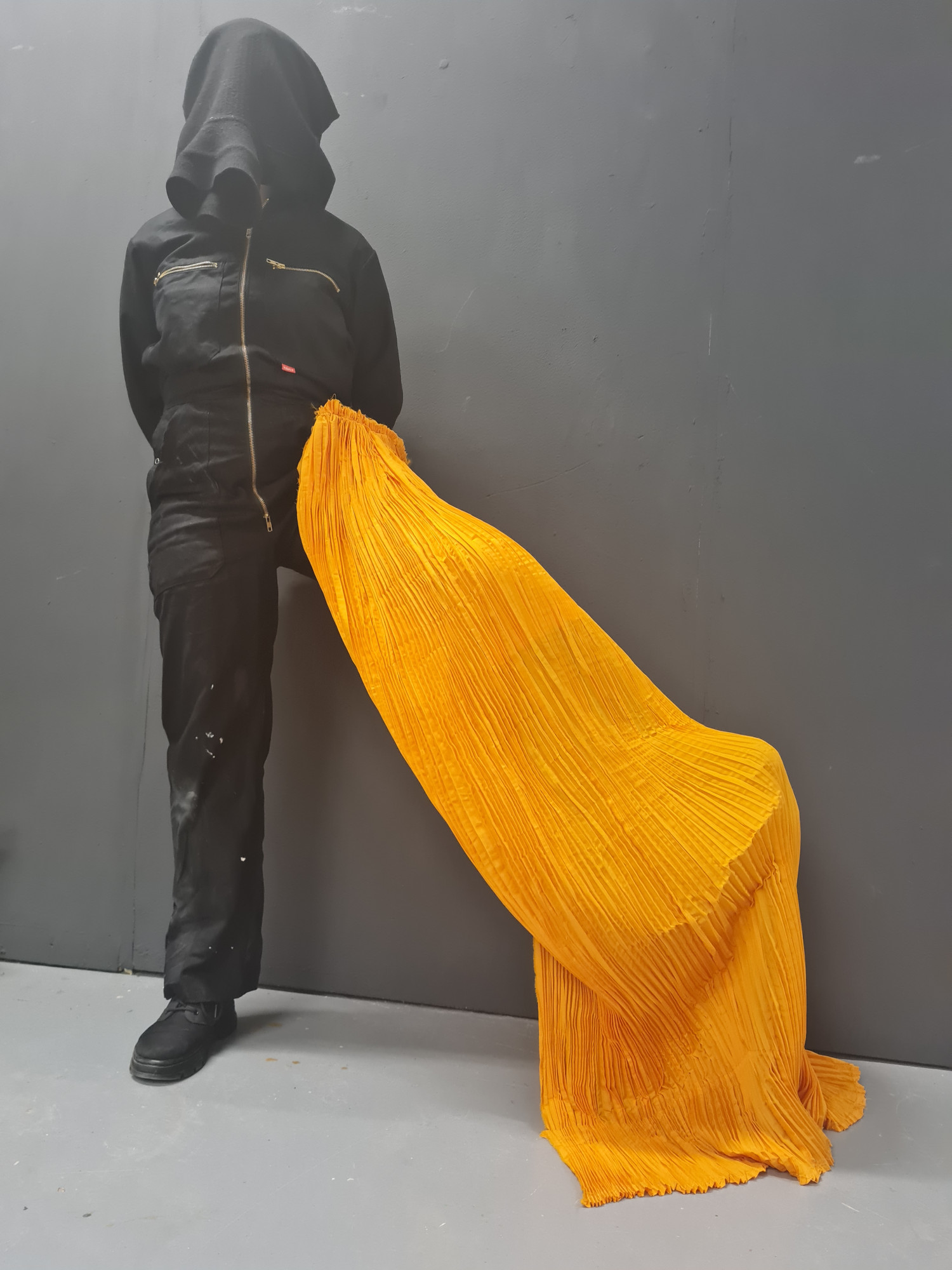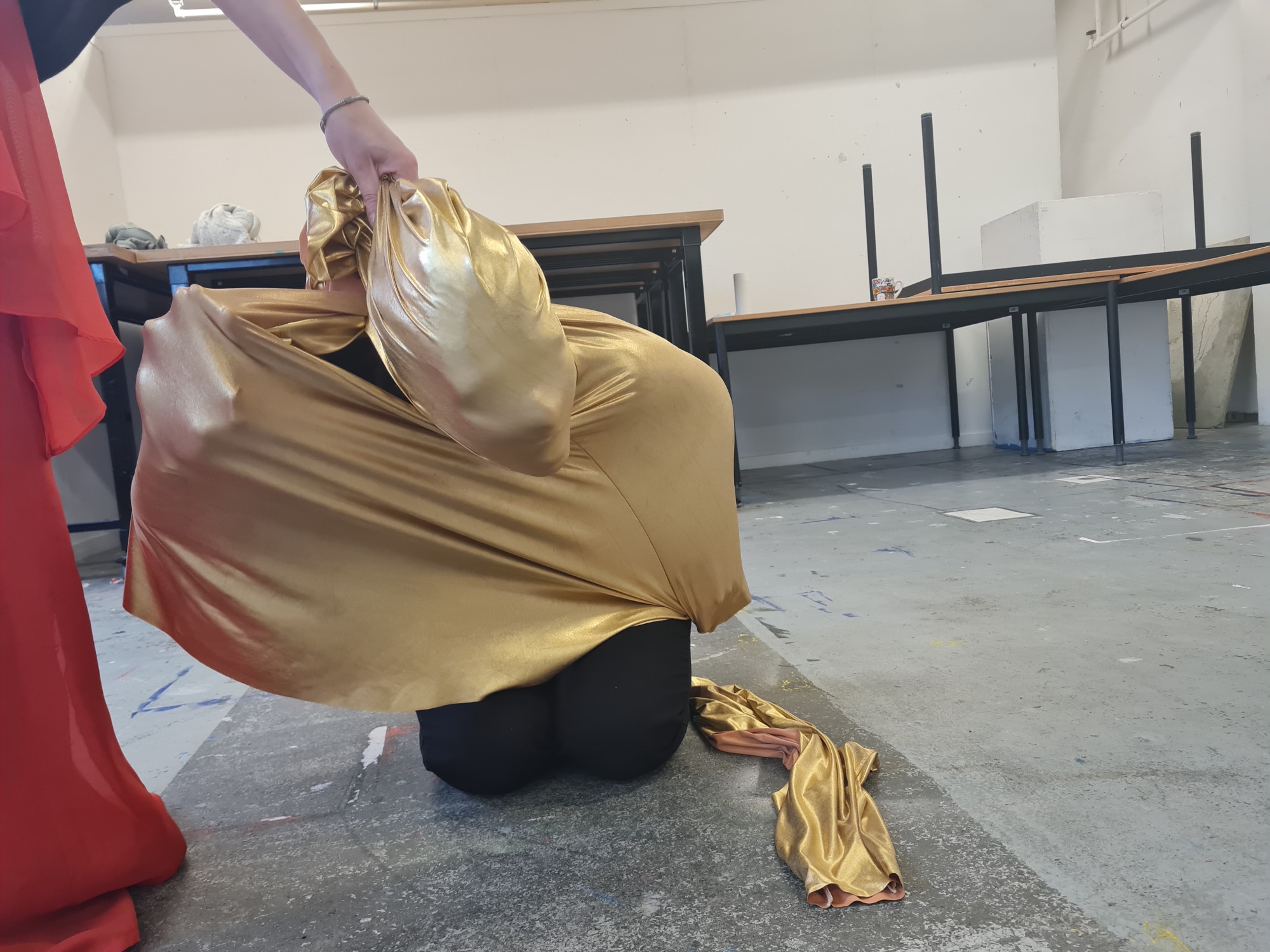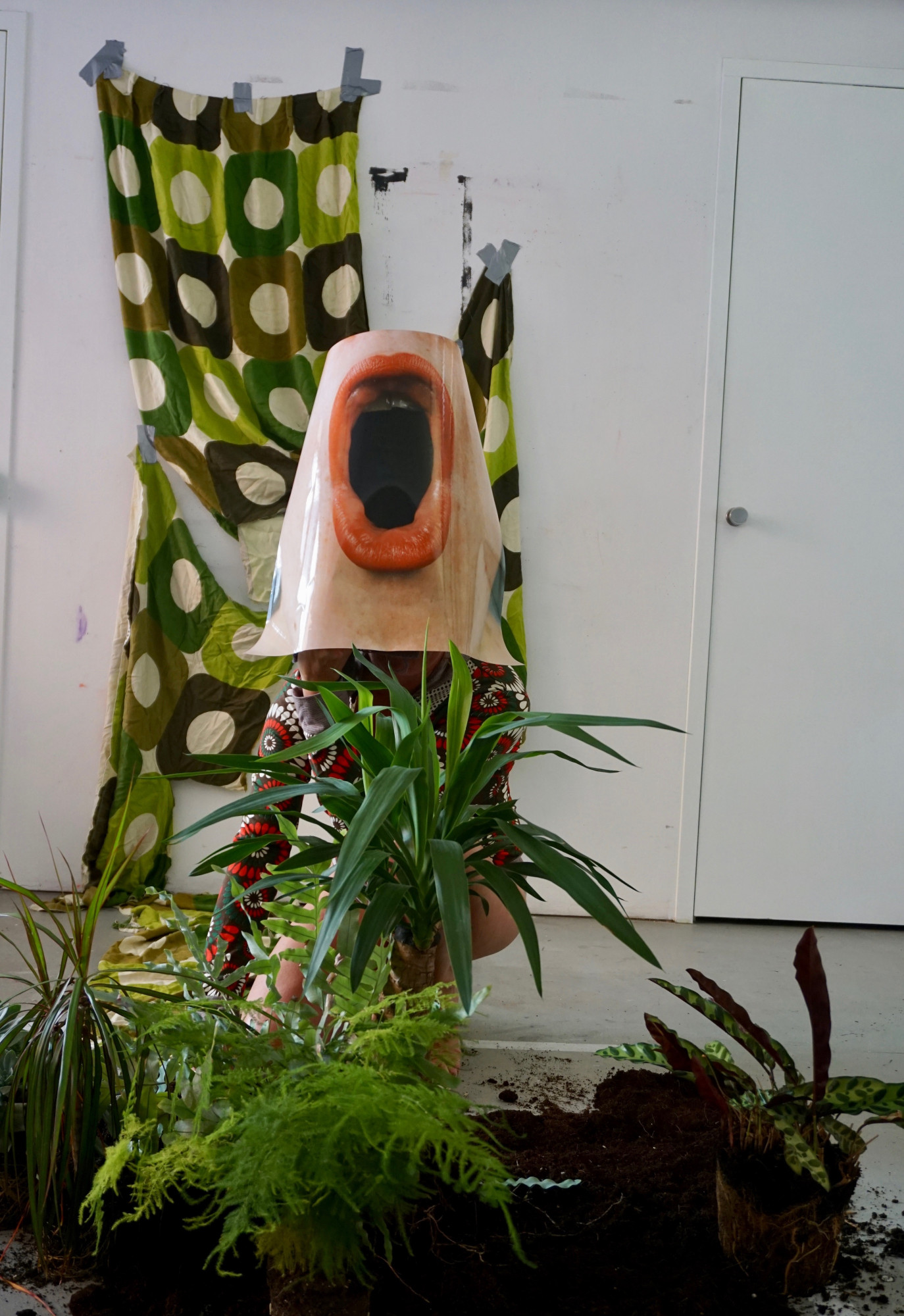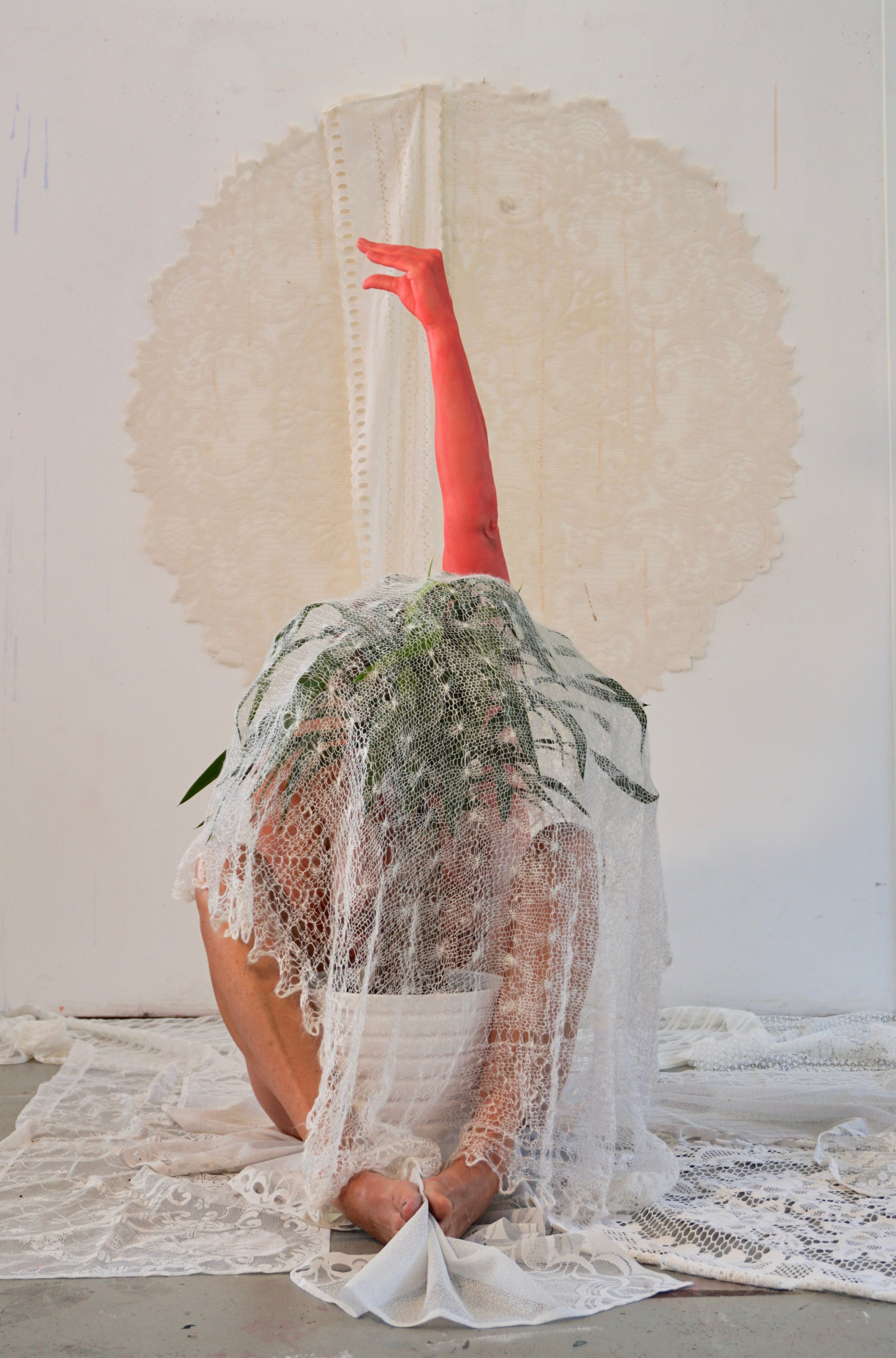Dancing with an unruly tendency
“Francine Claassen’s work is about authenticity, indomitable inner forces and the struggle to stay true to yourself in a world that is relentlessly pushing, pulling and pressing on the pain points.”
On the snow-white walls of her studio, three pieces of net curtain as high as the windows are hanging. They are casually painted with texts and partly bedecked with kaleidoscopic figures that turn out, when you get closer, to be composed of photo clippings of fabric-covered body parts. Pots of recently purchased gold paint are ready on the floor.
“An experiment,” explains Francine Claassen. “There are various layers within my work that together form a narrative, but the materials and the creative game are more present than ever.
What I create is ephemeral and fragmentary – I am continually storing, reusing and changing images.
On top of that, I work very much on impulse. A collage can be created in a minute. I want that artistic licence.
“Francine Claassen’s works are exuberant and come in many forms. There are collages, staged photography, installations and sculptural acts. The viewer is placed face to face with a pig’s head puking out a poem and a roaring lion on red, human legs. Bodies cladin stretch fabric are contorted into impossible shapes. There are people with painted bodies on stilts and exhausted human figures embracing abstract sculptures or dragging them along behind like heavy boulders.
Lines of text pop up regularly, expressing feelings of powerlessness and obliviousness with mockery, a wink or melancholy. The work seems to refer to a never-ending, obstacle-ridden human quest for escape, freedom and happiness.
“I depict a battleground. What is it like, as a human being, to be in amongst objects and people and nature?
It goes hand in hand with unease, incomprehension, uncertainty, unspoken desires, pent-up emotions and wild outbursts. In the world around me, I see a multiplicity that creates an unruly tendency. We have to function in amongst systems, models, schedules, responsibilities and vast quantities of data – a multiplicity within which you can lose your individuality. You have to suppress yourself and that effort generates an energy that we all share but keep hidden from each other. And then in my back garden, I hear my neighbours talking to their kids with feigned calmness although they’re seething with anger inside. Everyone’s in a bubble, and each and every bubble is a straitjacket of their own making.
“I don’t see the failing, things going pear-shaped, admitting that you don’t know either. I miss the blatant openness.
What’s not there is temperament,” she say “This is also why manifestations such as protest movements and campaigning interest her. That is all about daring to move outside the normal order, being contrary, winding others up. I may think all sorts of things about populist groups, but there’s a lot of emotion behind them. I find that emotion very beautiful.
As well as the battleground of everyday existence, the work also contains numerous references to the human body as an object. This began after Francine Claassen was diagnosed with Graves’ disease, a severe thyroid disorder, at the age of thirty-two. “I was treated using a radioactive liquid. That was a bizarre experience. The only people allowed near me wore hazmat suits and everything I touched became radioactive waste. It took two years before I was functioning properly again. Later, I needed two eye operations as well to correct the position of my eyes, as the disease had left them with an angry or scared look. Being ill has been a very defining event. I’ve felt what it’s like being stuck in a body you can’t trust and having people judge you by it and condemn you.”
During a period working at the European Ceramics Work Centre in Den Bosch, this experience translated into ceramic objects that included long plastic tubes and tresses of armpit hair. She started photographing and filming herself with them and discovered that the small, repetitive movements she made while doing so were even more interesting than the objects themselves.
“Small and repetitive motions create a kind of trance. It’s a way of pushing the world to one side and escaping.
As a child, I would bang my head into the pillow singing to help me fall asleep. That was repetition born of the desire to find another dimension.
It still plays a role in my work. I look for tension versus relaxation – something that the dancer and choreographer Martha Graham was a master in.” This fascination with a trance or rapture – a mental state in which the outside world becomes blurred or distorted – is something that she herself relates to past experiences with drugs, nightlife and festival-going. “Taking drugs transports you to layers within yourself that are very much back to basics, where nothing is disguised anymore. I found the stirrings of other dimensions in music, too. Music is still an important thread in my life and it’s always present in my studio.” Her playlist includes Heartless Bastards, Nouvelle Vague, Sylvie Kreusch, Luwten, Altin Gün, Spinvis, Klangstof, Nina Simone, PJ Harvey, Pumarosa and Fatoumata Diawara.
For collages, she often uses photos she takes during workshops with pupils and art education students. She asks participants to choose a text, often a passage from a recent newspaper, and respond to it through a sculptural act.
“A language of form emerges naturally as you move and play with textiles and garments. Meanings arise or vanish simply through the act itself.
The participants photograph each other and I take photos of them too, for my own use. In that new context, yet more new meanings arise.”
Sometimes she chooses to appear in a photo or video herself. The photographs or clips are then made by her partner Richard, who has a good sense of what she is after. Her daughter Lobke also features regularly as a model.
“That’s when I have an image in my head that I know will look better if I ask my daughter because she has a young and lean body shape. Conversely, there are cases where I wrap myself in strips of fabric as an experiment and the bulging skin folds are actually what I want.
Who am I, as a body? Looking good is something that you, if you’re a woman, have to distance yourself from more and more as you age. Which aspects of that are me and which aren’t? How can I be shamelessly female?”
She is not aiming deliberately to make a feminist statement in such works. “It arises by doing – it’s through acting intuitively. But I’m a product of the day, so current affairs are all part of the baggage.”
Through her work, she aims to embrace and share human struggles. “That’s liberating: it lets me breathe more, as a human being. Like everyone else, I move in a constant social force field. In uncomfortable situations, I make clumsy efforts to render myself invisible, although that actually makes me stand out even more. Or the other way around: I try to make myself look bigger but nobody sees. We all live among the gregarious and the loners, the wallflowers and the show-offs. And within that, you’re searching for the precarious balance between blowing your own trumpet and letting yourself get snowed under.”
